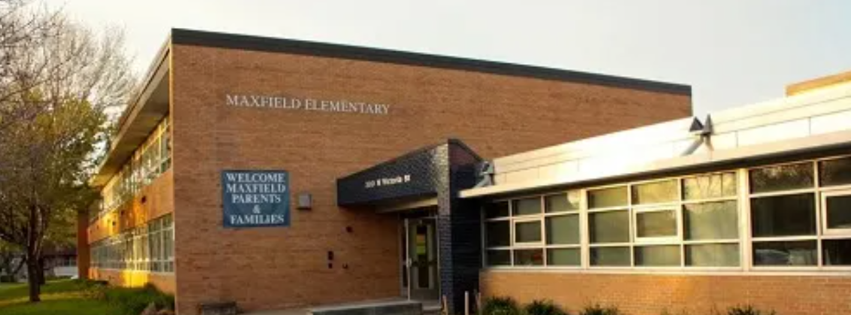Our Youngest Historians and Entrepreneurs: Maxfield Students Turn History Into Art on Selby Avenue

By: Felicia Perry, Economic Development Manager, Rondo Community Land Trust
This summer, windows along Selby Avenue will showcase more than storefronts; they’ll tell stories of Black resilience, entrepreneurship, and community through the eyes of 4th and 5th graders from Maxfield Elementary.
Led by community archivist and educator Michaela (Mickey) Day, this student art project is the result of a semester-long workshop exploring Black business owners in 1850s Saint Paul. Students dove into historical records like newspaper clippings, census data, and other archival materials, and used what they learned to create layered collage pieces that bring history to life. Every 12" x 12" print is both a research project and a work of art, honoring figures like Moses Dixon and the many Black Minnesotans who laid the foundation for commerce and freedom in our city.
Moses Dickson, a prominent abolitionist and minister, was one of many Black leaders who formed a tight-knit underground network in Saint Paul that supported freedom seekers before the Civil War. He founded the International Order of Twelve Knights and Daughters of Tabor, a secret society that helped enslaved people escape to freedom and later provided mutual aid for African Americans during Reconstruction. In the 1850s, Dickson lived in Saint Paul and was part of the local resistance against the Fugitive Slave Act. His work and the networks he helped build—including those embedded in Black barbershops and churches—played a critical role in making the city a haven for Black communities in the Upper Midwest.
I’ve been working directly with Mickey to help identify the right space to display the students’ work, in a way that honors their research and amplifies the brilliance of their creativity. This collaboration is aligned with Rondo CLT’s broader strategy to develop the Rondo African American Arts District, while also creating economic opportunity and meaningful public art experiences right here in our community.
The prints will be displayed in windows at Rondo Exchange and Golden Thyme Café at 856 Selby Avenue, forming a public-facing exhibit along our commercial corridor. These highly visible spaces reflect the spirit of the project, making community history and youth creativity accessible to everyone. Rondo Exchange, operated by Rondo CLT, supports local entrepreneurs through affordable space and business development. A didactic panel and QR code will accompany the display, offering project context and a video link by filmmaker D.A. Bullock that documents the students’ journey.
This initiative is a collaboration between Maxfield Elementary, the **Community Engagement Department at the **Minnesota Historical Society, the East Side Freedom Library, Rondo Community Land Trust, and the Rondo African American Arts and Cultural District. The project is made possible through funding from the Legacy Amendment—which supports arts, culture, and heritage work throughout Minnesota.
The installation will go up in late July, with a community celebration planned for August. That event will bring together students, families, and neighbors to experience the full exhibit, and invite everyone to participate in hands-on collage activities that teach personal and historical archiving through art.
In addition to the exhibit and event, the team is organizing an arts-related field trip to the Minnesota African American Heritage Museum & Gallery (MAAHMG), helping students deepen their connection to Black history and cultural institutions in our region. Rondo CLT is exploring ways to support this trip as part of our commitment to uplifting community-rooted learning experiences.
This isn’t the only time this month I’ve seen the brilliance of young people in action. Just days ago, I had the opportunity to speak with a group of high school students participating in the STEPP Program, a youth-focused financial literacy and empowerment series brought to Rondo CLT by Neacara Sutton. We were proud to provide space for this program at Rondo CLT throughout the summer. During my session, Dollars and Decisions, we explored credit, budgeting, lending, and our emotional relationships with money—through dialogue, reflection, and a spirited game-based activity. Watching these students think critically and creatively about their futures reminded me that economic development doesn’t start at adulthood. It starts when we make space for youth to explore, learn, and lead.
Whether through art or financial literacy, this July has affirmed what I know to be true: young people are historians, visionaries, and entrepreneurs in the making. When we center their voices, creativity, and capacity, we strengthen the future of our communities.
Want to learn more about what’s happening at Rondo Exchange? Join us at our upcoming Info Session on August 1.
👉🏾 Click here for event details.
Stay tuned for exhibit launch and event details this August. And make sure to stop by Selby Avenue to experience the brilliance of these young Rondo leaders and artists.